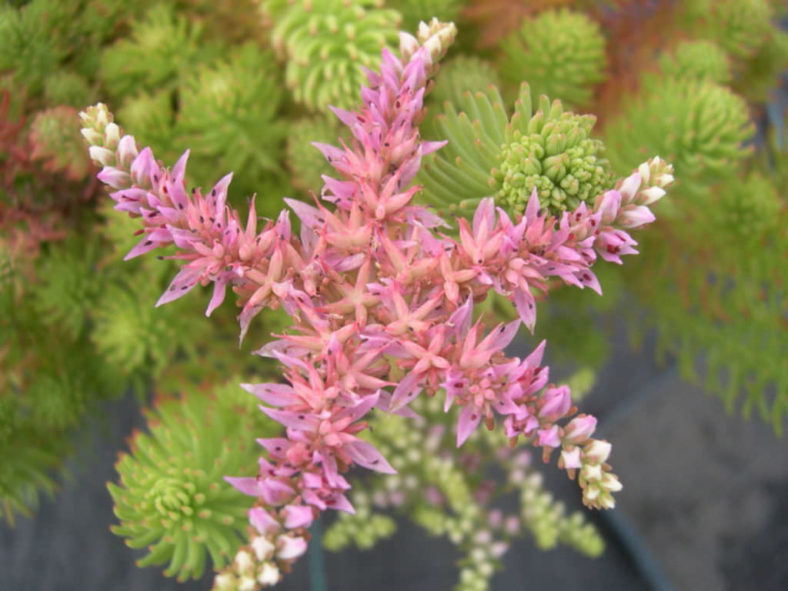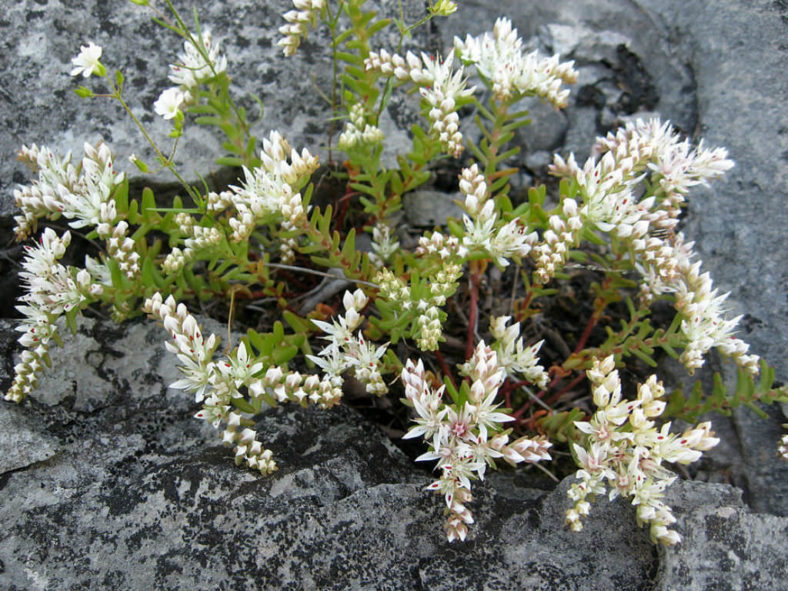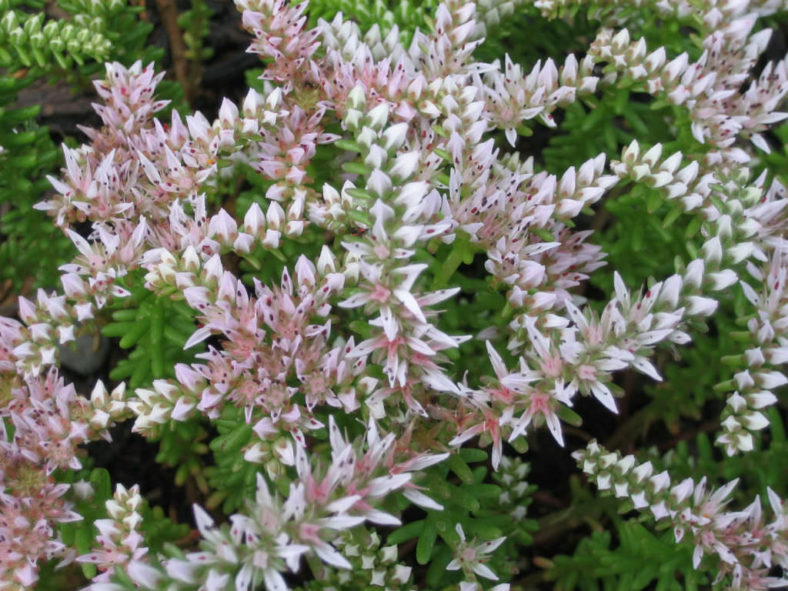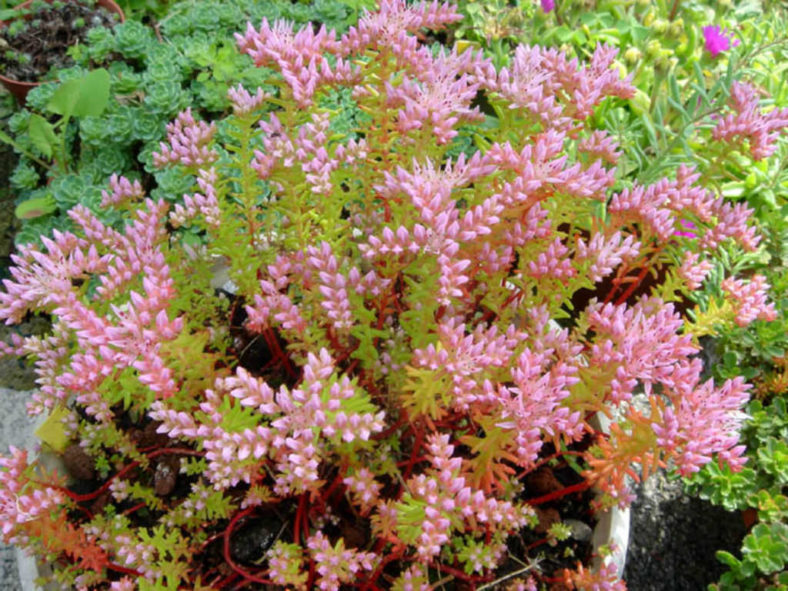Scientific Name
Sedum pulchellum Michx.
Common Name(s)
Sea Star, Widow's Cross, Widowscross
Synonym(s)
Chetyson pulchellum, Sedum pulchrum
Scientific Classification
Family: Crassulaceae
Subfamily: Sempervivoideae
Tribe: Sedeae
Genus: Sedum
Origin
Sedum pulchellum is native to the United States. It occurs in dry, thin soils, in rock crevices and bluffs from Ohio south to the Gulf coast, west to Texas, and north to Kansas, except Indiana, Florida, and Louisiana.
Description
Sedum pulchellum is an annual or perennial succulent with needle-like, pale yellow-green leaves densely arranged along simple or branched, ascending to spreading stems. The stems can grow up to 12 inches (30 cm) long, while the leaves can reach up to 1.3 inches (3.2 cm) in length and 0.2 inches (0.5 cm) in diameter.
The stems are topped by a horizontally branched cyme of tiny pink-white flowers that appear in late spring. The flowers are star-shaped with 4 to 7 pure white to purple petals and appear in clusters on upright stalks with 4 to 7 forked branches in late spring and early summer. This plant may be short-lived, but it self-seed freely. The dehiscent seed pods ripen to brown by fall before splitting open to release their seed.

Hardiness
USDA hardiness zones 6a to 9b: from -10 °F (−23.3 °C) to 30 °F (-1.1 °C).
How to Grow and Care
When growing Sedums, keep in mind that these plants need very little attention or care. They will thrive in conditions many other plants thrive in but do just as well in less hospitable areas. They are ideal for that part of your yard that gets too much sun or too little water to grow anything else. A common name for Sedum is Stonecrop because many gardeners joke that only stones need less care and live longer.
Sedum is easily planted. For shorter varieties, laying the plant on the ground where you want it to grow is usually enough to start it there. They will send out roots from wherever the stem touches the ground and root itself. If you would like to ensure further that the plant will start there, you can add a very thin covering of soil over the plant.
You can break off one of the stems for taller varieties and push it into the ground where you want to grow it. The stem will root very easily, and a new plant will be established in a season or two.
Learn more at How to Grow and Care for Sedum.
Links
- Back to genus Sedum
- Succupedia: Browse succulents by Scientific Name, Common Name, Genus, Family, USDA Hardiness Zone, Origin, or cacti by Genus
Photo Gallery
Click on a photo to see a larger version.


